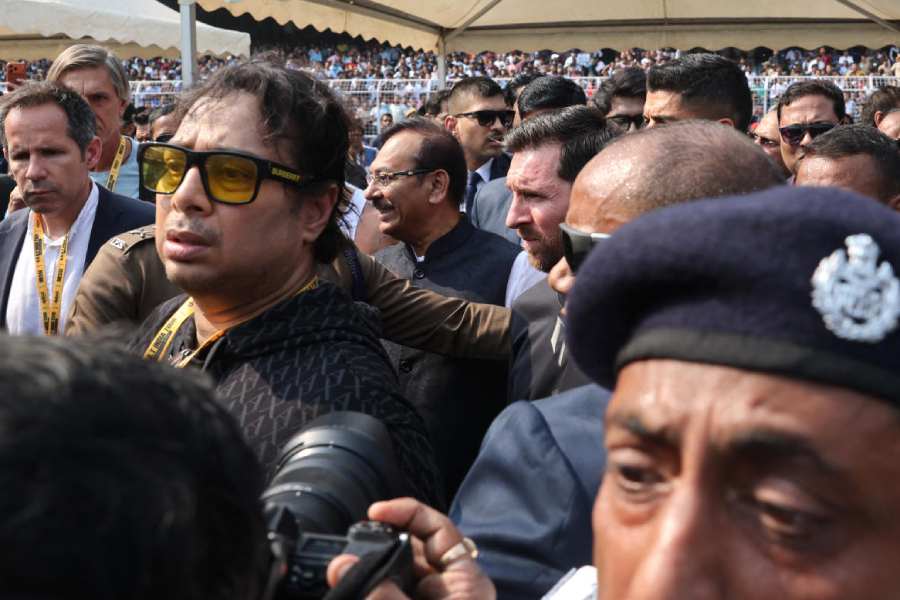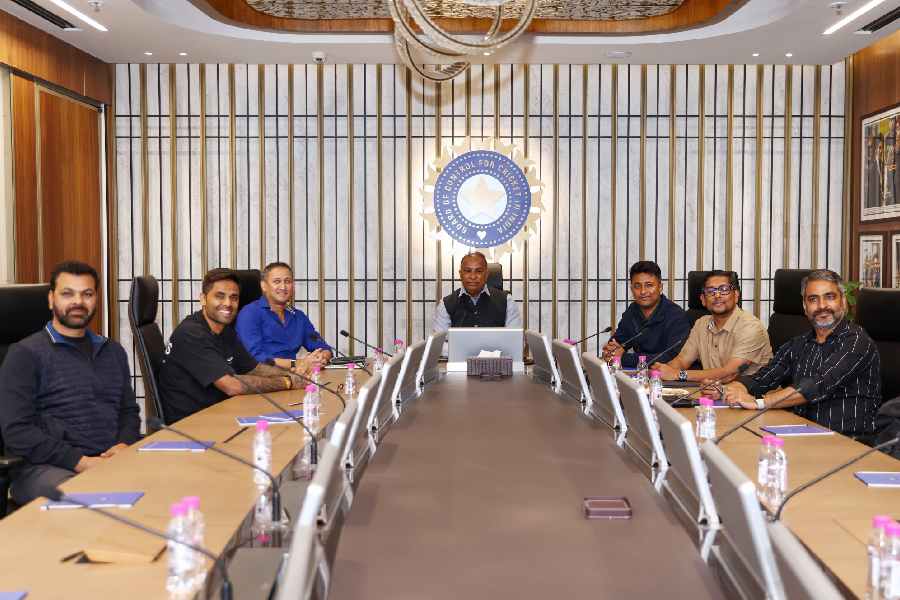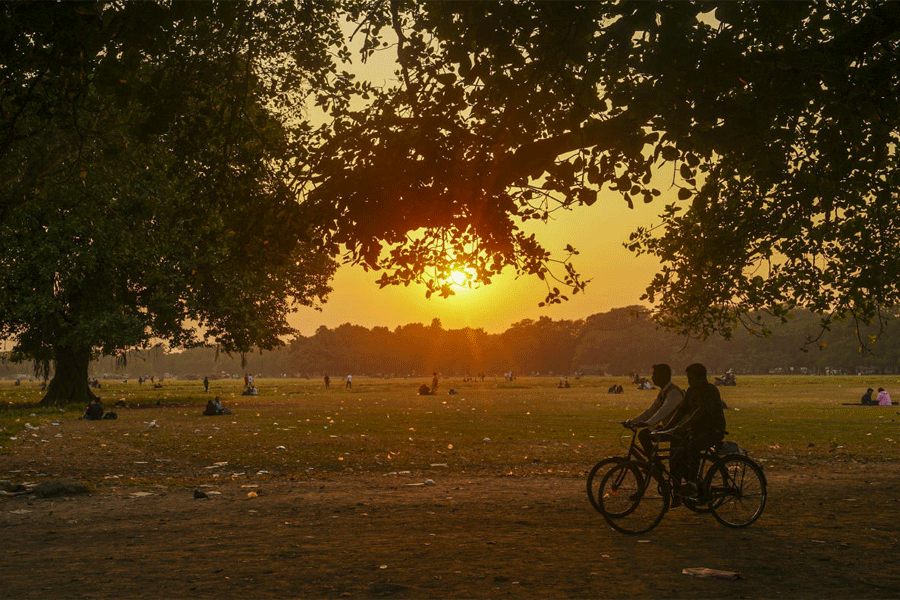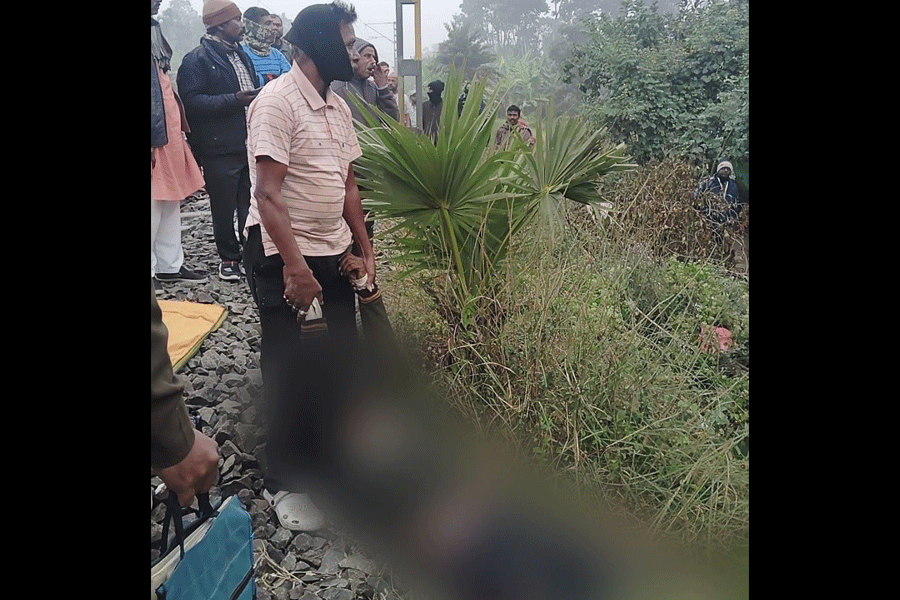 |
| Prashant Bhargava’s Patang, which premiered at the Berlin Film Festival, is showing in theatres in the US and Canada currently |
 |
It’s a moment that’s etched with extraordinary clarity in Bedaprata Pain’s memory. As he stepped onto a film set for the first time in his life, the entire cast and crew turned to watch his every move. Trying to look nonchalant, the NASA scientist turned movie director took his place behind the camera — he had invented the digital imaging technology used in the camera but never actually handled the camera himself. “I’d never been more scared,” says the Los Angeles-based Pain.
Now Pain’s film Chittagong, on the famous uprising, is winning acclaim at film festivals internationally and will soon be released in India. Pain quit NASA after 18 years to turn director in 2008.
Cut to New York-based Prashant Bhargava whose first feature film Patang premiered at the Berlin Film Festival and has released in theatres across the US. Patang’s got top reviews from American film critics like Roger Ebert. “It’s quite remarkable to have something like this in mainstream theatres here,” he says.
Pain and Bhargava are part of a new wave of Diaspora Indian filmmakers who are ambitiously attempting to straddle two worlds and make their mark both in Indian and international cinema. Some of their movies are set in India — even though they’ve hardly lived here. But they’re equally happy with subjects aimed squarely at Western audiences.
 |
| Richie Mehta (below), who made Amal with Naseeruddin Shah (top), has shot a sci-fi horror film with Gillian Anderson . |
 |
 |
| Pix by Bob Gundu |
The perfect example is Richie Mehta in Toronto, who made an impressive debut with the award-winning Naseeruddin Shah-starrer Amal in 2007. For his second movie he has changed course sharply and has just finished shooting a sci- fi horror film I’ll Follow You Down with big-name actors like Gillian ‘Scully’ Anderson and Haley Joel Osment of The Sixth Sense fame.
“The Diaspora film scene is growing. We used to have a hard time finding those gems. But now new and interesting voices are coming in,” says Christina Marouda, president, Indian Film Festival of Los Angeles (IFFLA).
The new voices are exploring diverse themes. So, London-based Nirpal Bhogal’s debut feature Sket about girl gangs in East London made waves in Britain last year. At a different level, Bornila Chatterjee’s Let’s Be Out, The Sun Is Shining, is set in the artist community of Bushwick, Brooklyn but its protagonist is a shy Indian American receptionist who fails in love. Chatterjee, incidentally, was born in Los Angeles, lived in Calcutta and is now based in New York. The movie won the Audience Choice award at the recent New York Indian Film Festival.
Meanwhile, Berlin-based social networking entrepreneur-turned-filmmaker Prashant Nair has turned his lens on India with his Delhi in a Day. Starring Kulbhushan Kharbanda and Lillete Dubey, it is a satire on the nouveau riche. “With so many Indian film festivals today, there are more opportunities to showcase our films,” says Nair.
 |
| NASA scientist-turned-filmmaker Bedaprata Pain with actress Chaiti Ghosh on the sets of his film Chittagong |
Marouda feels the boundaries are blurring as filmmakers — whether they’re in India or the US — are going “wherever the funding is available”. Also, the festival circuit is encouraging cross-pollination between the Diaspora and Indian filmmakers. The growing indie scene in India too is opening avenues for filmmakers like Pain.
So, how did a NASA scientist who’s in the US Technology Hall of Fame become a filmmaker? An IIT Kharagpur topper, Pain got a PhD from Columbia University before joining NASA in 1991. He holds 87 patents for inventing the digital imaging technology used even in cellphone cameras.
Pain was always interested in painting, music, writing and theatre. “For a long time I was doing not just science. After the invention and patents happened, I could do things in cruise control at NASA. But I always want to take up a new challenge, so I did,” he says.
Pain first co-produced his wife Shonali Bose’s Amu in 2005 before scriptwriting Chittagong. He felt the story of Surjya Sen and the student revolutionaries had to be told. “I wanted to tell a story of victory because it’s important for ordinary people today to have the confidence that they can make a change,” he says. That’s why he chose Subodh Roy, the frail student-revolutionary as his protagonist.
Chittagong was initially backed by a Mumbai studio, which withdrew after the 2008 economic crash. But that didn’t deter Pain. He used the royalty payments from his patents to produce Chittagong. And he overcame his inexperience by writing and painting each shot in detail.
Pain believes that living outside India gives him a unique perspective besides enabling him to bring a “scientific approach to filmmaking” here.
 |
| Entrepreneur-turned-filmmaker Prashant Nair (above far right) on the sets of his film Delhi in a Day; seen below is Anjali Patil, who’s making her debut in the film |
 |
Toronto-born Mehta also wants to “melt the distance between English and Hindi cinema”. Mehta became obsessed with films as a child but waited till he “found a way to come to it”. So, he studied painting and sculpture before getting a master’s degree in film. “I studied every liberal art — painting, sculpture, writing, theatre, photography — till I felt confident I could combine them all in film,” he says.
Mehta’s big break came with his 2004 short film, Amal, based on his brother Shaun’s story about a poor but content auto driver and an eccentric billionaire in Delhi. It won so many awards that he turned it into an equally hit feature film in 2007.
He intends to make “mainstream English films and also address cultural issues”. “I don’t know how to do masala films. But I’m trying to use India as an example to address the issues I see here in the West,” he says. With English films, Mehta wants to use a familiar genre and then push the audience “into something else”.
He’s got two films in post-production. There’s Sidharth about an illiterate zipper mender who tries to trace his missing son. And he’s just shot I’ll Follow You Down too. “I love sci-fi. Sidharth and Amal are about my observations but this is the most personal film I have made,” says Mehta. Both films are targeted at Western audiences.
 |
 |
| New York-based Bornila Chatterjee directs actor Scott Lyman, who plays the romantic interest against protagonist Lipica Shah in her film Let’s Be Out, The Sun is Shining |
Of course, being a cross-cultural moviemaker still throws up plenty of challenges. Like Bhargava is facing in releasing Patang in the US — and also in India. “The way I’m telling stories is very different. Patang is neither a Bollywood nor an independent Indian film,” he says. Bhargava, who grew up in the African American-dominant south side of Chicago, studied engineering at Cornell before he began designing music videos and promos in 1994. But he turned to India when he began making films in 2000. His short, Sangam, premiered at the Sundance festival in 2004.
Then came Patang with Seema Biswas and Nawazuddin Siddiqui, which took Bhargava seven years to make. Patang is about a joint-family in Ahmedabad’s old city and what happens when a long-lost rich uncle returns for a visit. Bhargava began the film in 2005. Since he was an outsider, he spent the first three years just observing and forging ties with the residents, shooting over 100 hours of documentary footage. “By the third year, I could hold a camera two feet from someone and they’d continue to be themselves,” he says. That has enabled him to make Patang in a naturalistic style with most of his cast being non-actors drawn from the community.
Like Bhargava, Nair too has drawn upon his childhood visits in Delhi in a Day. His parents were diplomats so he grew up in several countries from Switzerland to Sudan. “I was always troubled by how Indians treat their servants so I wanted to portray this hierarchy,” he says. Nair got an engineering degree from Purdue University in 1998 and worked with Internet start-ups initially. In 2001, he co-founded Avedya, a social networking consultancy, in Paris. But films were always a passion. “By 2009, I knew the passion wouldn’t go away,” he says.
 |
| The Diaspora film is growing, says the Indian Film Festival of Los Angeles’s Christina Marouda |
So, he did a film course at New York University and made a short film Max & Helena. That encouraged him to go further. “The subjects I’m interested in lend themselves to stories set in India,” he says. He’s currently scripting Umrica, “a comedy about the myth of America”, which was selected for the Mumbai Mantra Sundance Screenwriters Lab.
The new Diaspora filmmakers aren’t at all deterred by boundaries. So Chatterjee’s Let’s Be Out… is an Indian-American story but she plans to direct a Bengali film next. Chatterjee recalls acting since her childhood. She did theatre in Calcutta before graduating in film and television from New York’s Tisch School of the Arts in 2008. She made Let’s Be Out... on a shoestring budget. It’s a “love letter to being young in New York” but it’s also got an Indian-style item number. “I feel at home in Calcutta and very much at home here. So that sense of being an outsider and at home influences the way I make films,” she says.
Of course, there are several challenges. It’s still not easy to break into the studio system and distribution is tough too. Still, the filmmakers are scaling up their ambitions. Pain’s next film, set in India, will be “a love story in the time of political turmoil”. And he’s also scripting a story set in World War II in Kiev. Mehta’s already got LA-based producers for his next, an English film about an Indian family in South India. And Bhargava has shot an experimental film set in Holi in Mathura, which is based on Igor Stravinsky’s The Rite of Spring. And he’s also developing a story set in the African American community in the south side of Chicago.
Chatterjee too has scripted two stories set in Calcutta. But she knows her films won’t be confined by borders as people increasingly consume entertainment over the Internet. “It’s possible now to make films all over the world. Where you are and where you make a film does not have to define you or the work,” she says. It’s a sentiment that many of the Diaspora filmmakers echo.











